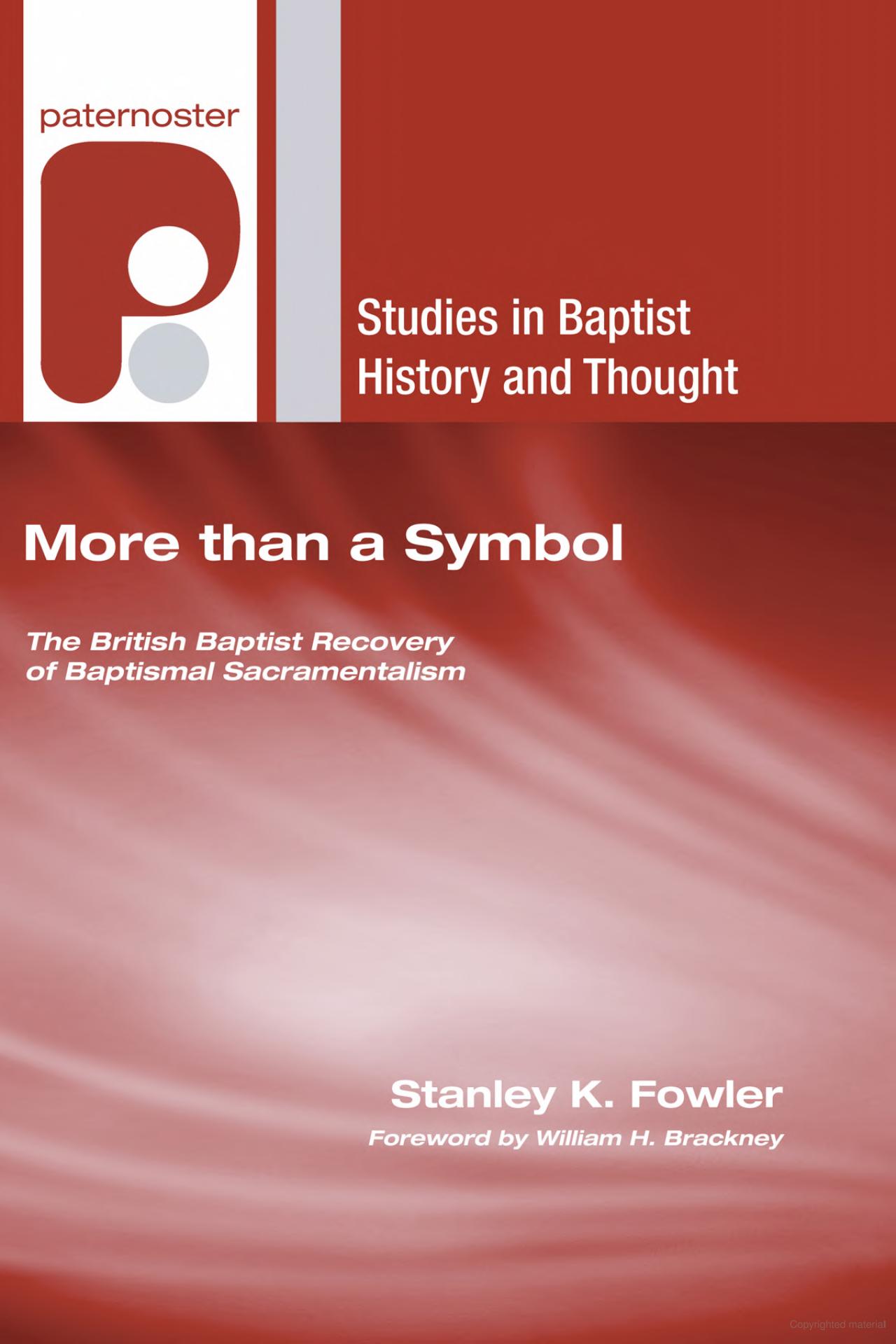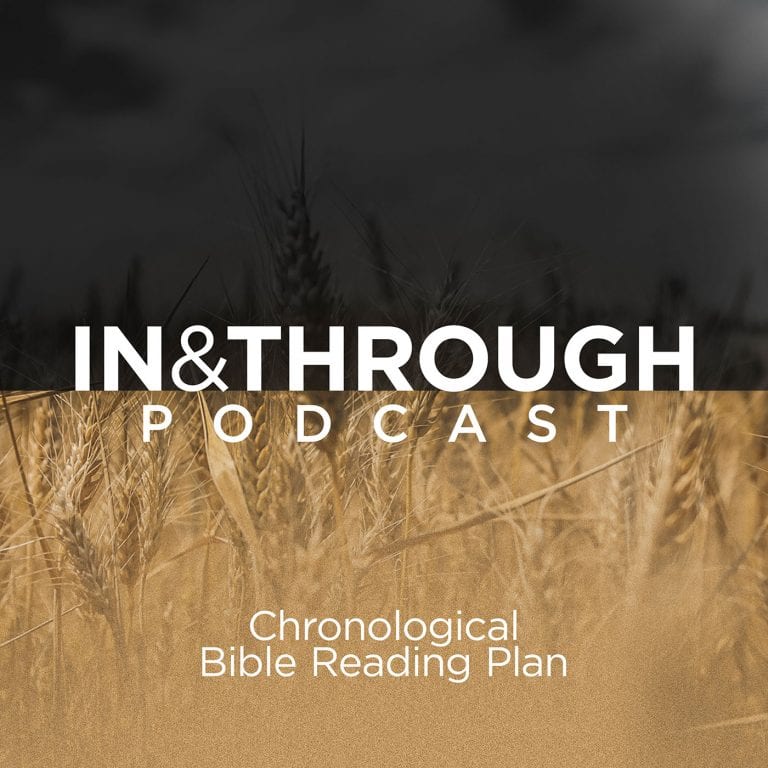Stanley Fowler is a beloved churchman and theologian to many of my friends, so I regularly hear, “You have to read Stan!” Therefore, as I’ve recently been reading the two volumes of his collected works, published by H & E, I was not surprised to find his writing theologically rich, precise, and always illuminating. It was only a matter of time before I picked up his major work: More than a Symbol: The British Baptist Recovery of Baptismal Sacramentalism.
In this book, which is the publication of his doctoral thesis, Fowler, an Evangelical Baptist, argues for a sacramental view of baptism. This book deserves to be widely read.
Near the beginning, Fowler states what calling baptism sacramental means:
To say that baptism is “sacramental” is to say that it mediates the experience of salvific union with Christ, i. e., that one submits to baptism as a penitent sinner in order to experience the forgiveness of sins and the gift of the Holy Spirit, rather than as a confirmed disciple in order to bear witness to a past experience of union with Christ (p. 6).
Fellow Baptists might hesitate to use this sacramental language for baptism. It may seem to undermine the gospel emphasis on justification by faith alone and attribute an alien power to the baptism waters, making it the channel of conferring saving grace, rather than a response to the gospel. Fowler is aware of this objection and addresses it by showing how baptism’s sacramental nature is consistent with Biblical exegesis and Baptist ecclesiology (see esp. pp. 217-219).

More Than a Symbol: The British Baptist Recovery of Baptismal Sacramentalism
Stanley Fowler
More Than a Symbol: The British Baptist Recovery of Baptismal Sacramentalism
Stanley Fowler
Fowler’s argument is related to the conscious experience of salvation. Baptism is how a person says yes to the gospel. That the faith response to the gospel should be formalized through some act is not foreign to Evangelical Christians.
The fundamental question is: How does baptism function in the New Testament? God’s intended, normative function for baptism must be the foundation of baptismal theology and practice. For Fowler, following the 20th-century British Baptist Sacramentalists, baptism is an enacted faith response to the gospel. It is how repentant sinners say yes to the gospel, and God meets this response of faith with the grace of affirming and sealing up the person’s union with Christ at the level of conscious experience. Baptism is understood “as the vehicle of faith, the means by which faith becomes a conscious, tangible reality” (p. 201). Therefore, in baptism, God meets the response of faith with a tangible spiritual change. Fowler says,
The burden of Baptist sacramentalism has been to assert that baptism is an event in which God truly acts and effects spiritual change in the baptizand, and this is so because it is the event in which there is a genuine and conscious divine-human encounter, a meeting of grace and faith (p. 229)
Fowler prefers the language of conversion or faith baptism to describe baptism’s normative function in the New Testament. The language of the NT, for Fowler, supports the view that baptism functioned as the visible means by which a penitent sinner sought the experience of salvation: the forgiveness of sins and union with Christ. This is opposed to the view that baptism functions as the testimony of a confirmed believer to an already completed conversion. Fowler describes baptism as an acted prayer, as repentance, as the way a sinner stricken by the gospel seeks the salvation God promises, and as redemption applied.
Fowler’s description of baptism is noticeably different from the baptismal language of his tribe (Evangelical Baptist). In part, as Fowler notes, this is because the experience of conversion and the act of baptism are often separated in Baptist churches (p. 233). Nevertheless, Fowler argues that Baptist Sacramentalism is not inconsistent with a Baptist ecclesiology. Seeing baptism as the normative means of mediating the conscious experience of salvation, Fowler argues, is a more Biblical and coherent argument for credobaptism.
The Baptist Sacramental view, which Fowler defends, was formulated in the 20th century by British Baptists such as Anthony Cross and George Beasley-Murray. Fowler argues that this was not a new movement but rather a re-formulation of the Baptist theology of the 17th century. This recovery did not happen at the level of conscious experience, which is something Fowler articulates well:
The contributors were aware that they were seeking to reform Baptist thought and practice, but they showed a limited knowledge of the Baptist tradition. They were in general much more concerned to interact with scholars of other traditions than to interact with earlier Baptist literature (p. 155).
This led to a failure to show their connection to the Baptist tradition and an inability to anticipate Baptist objections (p. 155).
This lack of historical awareness is a common thread Fowler sees in Baptist theology and exegesis beginning in the 18th century. Baptists usually articulated their views amid controversy around the proper mode and subjects of baptism, with minimal engagement with Baptist history. Fowler’s book attempts to do the opposite and thus provides a good model for theological retrieval within the Baptist tradition. He positions Baptist Sacramentalism as a recovery of the baptismal theology from the origins of the Baptist movement.
Mark McKim’s recent book, The Secularization of Baptism, challenges Fowler on this point. Both agree that 17th-century Baptists viewed baptism as sacramental, however McKim sees the “Sacramentalist” view that baptism mediates the conscious experience of conversion as a new position within Baptist history. McKim posits that the Particular (Calvinistic) Baptist view saw baptism as God’s means of affirming and strengthening new believers, but the specifics were much less defined than the “Sacramentalist” view. An analysis of these two works would provide an interesting and useful project.
When Fowler engages the Biblical texts on baptism, he is careful not to explain away the strong connections between baptism and the experience of salvation. For example, in Romans 6:3-4, Paul says, “Do you not know that all of us who have been baptized into Christ Jesus were baptized into his death? We were buried therefore with him by baptism into death, in order that, just as Christ was raised from the dead by the glory of the Father, we too might walk in newness of life.” Regarding this passage, Fowler says, “Baptism is there viewed as the event in which believers were effectively united to Christ and thus to the benefits of his redemptive work” (p. 161). This natural reading of the text is often muted in Baptist exegesis, which nullifies the baptismal efficacy assumed by a natural reading of the text. (p. 39, 161, & 187).
Baptism is the visible act of repentance and faith. It is not the ultimate cause but rather the instrumental means of experiencing union with Christ. I deeply appreciated Fowler’s commitment here to let Scripture say what Scripture says.
There is a danger when Bible teachers publicly read a passage of Scripture and then say, “Now this appears to say one thing, but it actually isn’t saying that at all.” These are seeds for a posture of suspicion to dominate our Bible reading and for resting authority in the interpreter, not in the divinely inspired text. Fowler highlights this habit in how Baptists commonly treat passages such as Acts 2:38, Romans 6:1-6 and 1 Peter 3:21, all of which appear to say that baptism is an instrumental and normative part of a person’s experience of salvation, though not necessarily indispensable. God works through means, but he is not bound by them.
Overall, I find Fowler’s view persuasive. However, I think his thesis could be developed in interesting ways through dialogue with early church catechesis of baptismal candidates, specifically in church manuals like The Didache and the catechetical lectures from someone like Cyril of Jerusalem. This material seems to support baptism functioning as a testimony to a prior conversion before the “merely symbolic” Baptist view was formulated. Some comparative work could sharpen the understanding of baptism as the initiating experience of receiving the benefits of Christ.
Two Good Questions
Two important questions highlight the target of Fowler’s work.
1) What are we doing in baptism?
Fowler argues that baptism is not a backward-looking testimony to a prior and completed conversion but a forward-looking plea from a repentant sinner for the forgiveness of sin in Christ. He asks a good and provocative question, “Are we baptized because we are sinners or because we are saved?” (p. 25). In the Baptist churches I know, people share their testimony when they get baptized. I’ve heard many testimonies from people declaring that they are getting baptized now because they know Jesus has saved them. It’s beautiful, but Fowler would say, it’s not the New Testament function of baptism. Separating the experience of conversion and the act of baptism.
An important point of clarification will prevent a misreading of Fowler’s argument. Nowhere does he assert that baptism creates faith and is the ultimate basis for the forgiveness of sin and union with Christ. Rather, his argument is related to the conscious experience of salvation. Baptism is how a person says yes to the gospel. That the faith response to the gospel should be formalized through some act is not foreign to Evangelical Christians. We lead people in “the sinner’s prayer” or have an altar call. Fowler says, “Some kind of human response is instrumental in the application of redemption” (p. 83). For Fowler and the Baptist Sacramentalists, baptism, which he calls an acted prayer, is God’s ordained instrument for this response (p. 202).
Conceptually, this is not far from what the editors of the excellent book Believers Baptism claim in the introduction to that book, “Believer’s baptism accords with the gospel because it teaches that the objective work of God in salvation necessarily leads to the subjective response of faith.” (Believers Baptism, p. 2). Fowler holds together experientially what every Baptist holds together theologically.
This clarification helps understand where the pressure of Fowler’s argument is applied. Does baptism function in our churches the way it functions in the New Testament? Have we separated the experience of conversion from the experience of baptism so that we need to recover God’s ordained means of saying yes to the gospel?
2) What is God doing in conversion/faith baptism?
17th-century Baptists, Fowler says, argued that “Since baptism is done in the name of the Trinity… the Triune God is working through baptism” (p. 47). He identifies God’s work through baptism as an effective sign and seal, a means of grace to convey what it signifies. This is not due to the act of baptism, but “that God, by the Holy Spirit, effects a genuine encounter with the baptizand in which he unites the baptized believer with Christ and thus with the benefits of Christ” (p. 210).
What is promised to faith, Fowler says, is sought by and tangibly experienced in baptism. Again, it is important to clarify Fowler’s framework. Faith is not equivalent to baptism, but baptism always enacts and embodies faith. God meets this faith response to Christ in baptism, bestowing the experience of the things sought in baptism, namely the experience of forgiveness, union with Christ and belonging to the church.
The best books raise good questions and challenge our presuppositions. For many, Fowler’s work on baptism has done just that, especially on this point. God is present and active in baptism. I would articulate this differently than Fowler, emphasizing more of God’s affirmation in baptism that we are “children of God.” I see the divine encounter of our baptism reflected in the triune activity at Jesus’s baptism. Identifying with Jesus’s death and resurrection through baptism, we receive the assurance of the Father’s love that is sealed up for us by the Holy Spirit. I’m not sure this is a point of disagreement, or simply a difference in emphasis or articulation.
These pressure points raise useful questions, even if you disagree with a sacramental view of baptism. Clearly, the NT connects baptism to conversion. How can our churches apply this normative function of baptism today?
On some level, the baptismal practice of every church today is different than what is narrated in the book of Acts. This was also true to some degree even in the early church, evidenced by the second-century church manual The Didache’s recommendation for a period of instruction before baptism (Didache 7.1). That’s okay. But we need to ask the right questions and do our best to immerse ourselves in the theological and ecclesiological framework of Scripture. Fowler’s work can help raise and debate those questions with you.
As my friends say: You have to read Stan.
























